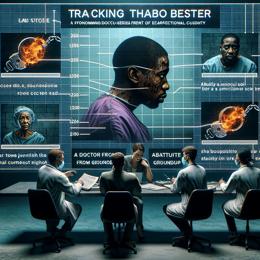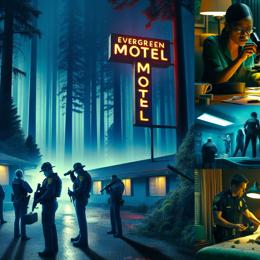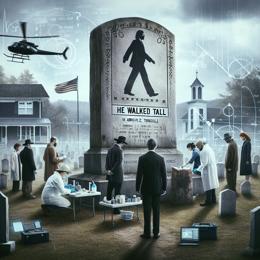Content created by AI
Former FBI Agent Jana Monroe Reflects on Chilling Encounters with Serial Killers
In a career marked by the study of the most nefarious minds, former FBI agent Jana Monroe encountered numerous individuals whose actions defy understanding. Yet, among them, the eerie demeanor of Edmund Kemper stands out as a chilling memory. Despite years of training and profiling, Monroe was left unsettled by her interaction with the man dubbed "The Co-Ed Killer."
Her recently published memoir, "Hearts of Darkness: Serial Killers, the Behavioral Science Unit, and My Life as a Woman in the FBI," brings forth a narrative that explores not just the darkness of the human psyche, but also the struggle of being a female agent within the male-dominated arena of the FBI. For Monroe, the line of duty has transcended beyond the boundaries of her official role, even becoming the model for Clarice Starling in the iconic film "The Silence of the Lambs."
Kemper's monstrous crimes in the '70s included the murders of his mother and her friend, which became a troubling chapter in the annals of American crime. His intelligence—a trait often highlighted in standardized tests—belied the brutality of his actions, painting a picture of a cunning and remorseless killer who was able to mimic emotional responses without ever truly feeling them.
Monroe's interactions with serial killers extended to others like Ted Bundy, who she never met personally due to his refusal to be interrogated by women, a stance reflective of his twisted views. However, Monroe's expertise allowed her insights into Bundy's predatory mind—choosing "worthy victims" to extend his perverted sense of control and taking pleasure in the challenge.
Yet, among these chilling encounters, there was one that sparked empathy in Monroe: Aileen Wuornos. Monroe's evaluation of Wuornos's traumatic life raises questions about how a deeply troubled past can shape a person’s future, with Wuornos's execution for the murder of six men only concluding a life ridden with exploitation and hardship.
Perhaps the most perplexing question that Monroe grappled with was understanding the women who fall in love with serial killers. Despite their awareness of the heinous acts committed by their partners, these women, Monroe observes, tend to overlook the glaring red flags, driven by an inexplicable attraction to "bad boys on steroids."
Monroe’s memoir is not just an account of high-profile cases but a contemplation on the human condition—questioning the fascination with serial killers that grips the public imagination. Serial killers defy the stereotyped image of a fiendish persona, oftentimes displaying a veneer of normalcy that can easily deceive the unsuspecting.
Her reflections also tap into the broader debate around the construction of criminality and the curiosity that surrounds it—akin to the inability to look away from a major accident. Monroe's book aims to shed light on this paradoxical space of 'mindhunter' work: compelling in its pursuit of truth, yet repulsive in the depths it must venture to find it.








